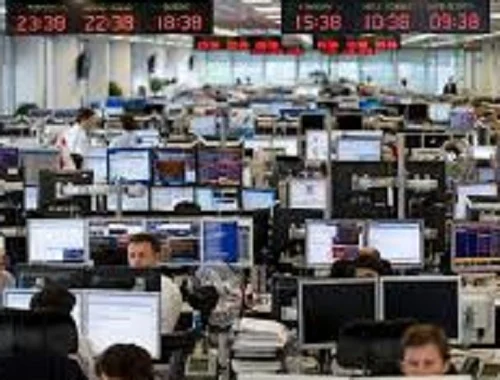ICE sees carbon market tracking evolution of natural gas
24th November, 2021|Radi Khasawneh

ICE's natural gas TTF growth into a global benchmark shows how the nascent market in carbon trading will develop, the exchange says
The growth of Intercontinental Exchange’s (ICE) natural gas TTF futures and options contracts into a global benchmark shows how the nascent market in carbon trading will develop, according to the Atlanta-based exchange’s head of utility markets.
Gordon Bennett, managing director of utility markets at ICE, told Global Investor that the increase in international participation in the carbon market has evolved to the point where he can see a similar growth path to the exchange's experience replacing the UK NBP natural gas future as the European benchmark. For the carbon markets, he pointed to the increasing focus on net zero commitments internationally.
“Gradually the whole net zero theme has got bigger and bigger, so whether they are mandated or not, market participants are going to have to get to grips with pricing positive and negative externalities using environmental markets,” Bennett said.
“We have been doing this actively for a decade, and we are seeing a shift from natural gas being the most dynamic area within utilities to environmentals. It’s quite similar to what we saw with gas markets, where participation has grown and diversified so that carbon is now being traded as an asset class in its own right.”
Dutch TTF gas prices have been highly volatile amid supply worries in Europe, with the price of the December 21 future contract rising 543% over the course of the calendar year to October 5. That has been good for volumes of TTF, which, as a euro-denominated contract, had taken a pre-eminent position as a hedge for corporates in the region.
“TTF is far more than just a European benchmark,” Bennett said. “Many people refer to it as a balancing market for Liquefied Natural Gas (LNG), and as the natural gas market has moved into a global market I would say TTF has been the beneficiary of that.”
In the year to November 22, 40.4 million TTF futures and options contracts have been traded on ICE, representing a 42% increase year-on-year. Open interest on futures breached 2 million lots on September 23, a record, and stood at 1.946 million contracts on November 22. It is the number of participants that is the most notable development in Bennett’s view, with 69% of lots traded coming from outside the European Union and the UK.
“Participation outside the UK and Europe has increased substantially over the course of the last five years,” Bennett said. “The trend is going up every year. In 2016 it was less than 30%, now its over 50% so its nearly doubled over the course of the last five years.
"If I look at the global relevance of TTF and the influx of commercial and financial participants coming from outside of the legacy U.K. and European commercials, then its status as a natural gas benchmark should continue to solidify further. If you look at churn rates, and take Henry Hub as the anchor, then TTF has the potential to grow significantly over the next few years."
ICE has made a series of recent launches aimed at growing its established carbon pricing complex, taking in both primary markets (in the form of auctions) and contract launches aimed at extending the carbon trading universe.
The exchange on Thursday announced it will host bilateral auctions for Permian Global forest-based carbon credits starting next year. ICE announced earlier this month plans to launch in early 2022 its first Nature-Based Solutions contract and form an oversight body to safeguard voluntary carbon market standards.
“The portfolio continues to grow and we expect more products aimed at pricing a wider range of externalities,” Bennett said. "Many of the products of the future will be based around capturing positive externalities, expanding on the successful model of renewable energy certificates, or guarantees of origin, which are used to evidence the environmental benefits of electricity generated from renewable energy sources."
The greatest potential for growth will be technical processes for capturing carbon dioxide like direct air capture or carbon capture, usage and storage [CCUS], Bennett says.
“In the same way, nature-based carbon credits are effectively guarantees of origin to evidence the environmental benefits of capturing and storing carbon emissions," he added. "I can also see the development of markets, capturing the value of this positive externality, by including carbon removal technology credits based on the likes of direct air capture and carbon, capture, utilisation and storage.”


